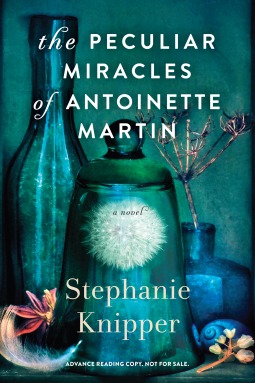Who are your favourite magic realist authors and why?
As far as I can think back, my main interests, besides my love for Nature, were always the Arts and Spiritual Healing. This lead to studies of Shamanism following teachers like Michael Harner, where we naturally worked with another ‘reality’ – which was something I knew from the San people in the Kalahari of South Africa.
At that time, I was also drawn to the fascinating work of Carlos Castaneda. Here, the ‘magic’ in form of a search for power came in. It stunned me as it was not in synch with what a true shaman – who is a healer – aspires to. It appears that real insights were drawn from other sources and traditions, but Castaneda knew how to write and package the message, and he did something else: He put himself into the story.
Much later, my film editor gave me a small book that was so special, that I went all the way to London to get the adaptation rights. The author was a Nigerian writer: Amos Tutuola. It may be my African heritage – although my cultural roots are also firmly grounded in Europe – but this vivid, extraordinary writing with its special rhythm immediately resonated with me, and I still enjoy it today.
Of course, I could not resist Joanne Harris’ strong and sensuous ‘magical woman’ (‘magical mother’) and her culinary temptations, blown by the wind into a rigid little French town, where she opens – of all names - ‘La Céleste Praline’ opposite a . . . church! Played by my favourite actress, Juliette Binoche, this was an absolute treat. As a magical realism story, ‘Chocolat’ has much more depth than it seems.
What is your all-time favourite magic realist book?
Bearing in mind that there are so many books I still want to read, so far, my all-time favourite magic realist book is: The Palm-Wine Drinkard by Amos Tutuola.
Why do you write magic realism?
I did not set out to write a magic realism novel.
I wrote my story for a young girl who deeply cares about Nature and its survival, bearing in mind that everything is a reflection. And I wrote it for baby boomers, who are too busy on treadmills to stop and reflect on life’s most important questions, who now panic as their own transition draws closer. In the end, my mission is always to heal.
As a hypnotherapist, we work on different levels with each patient. While always aware of the ‘here’ and ‘now’, we work with the subconscious. We’re here and there – whereby ‘there’ is like a gap between thoughts. It’s a natural process; the patient is always in control. This can be taken much further during past life regression, where one moves beyond the death experience into other lives and even existences that are a far cry from what we consciously know. While this process takes place in our known world, our so-called ‘reality’, it has a perceived ‘magical’ component for some, that is exploited on stage in a totally misleading way.
Also, all my creative work as a screenplay writer or filmmaker included different ‘realities’ – and so does my debut novel. Life’s mundane fabric contains many strings of magic – not as a mere decoration, but as a part of it. So when my editor suggested ‘Magical Realism’ as the appropriate genre, it immediately made sense.
Can you give us your definition of magic realism?
I’ve read many definitions for magic realism, none of which I truly resonate with. Maybe it’s because I cannot imagine a reality without magic? The following thought – based on a quote from the Bible, John 17:14-15 – is an attempt to express what I feel: In magical realism, as a literary genre, we play with the notion that we are in the world, but not of it. This awareness can lift or defeat us; it can be used to harm or to heal.
Tell us about your latest magic realist book?
It's called The Immortal Life of Piu Piu
Description
Set in a land of shifting realities – the Western Cape coast of South Africa, between Nature's paradise and a ruthless world – and based on the heartbreaking true story of a human-animal bond, this magical journey reveals how a young girl and the wild creatures who are her constant guides, join in the ultimate adventure: to reveal the mystery of life after death.
The Main Characters
- Pippa - A natural born leader who joins forces with wild creatures and natural scientists, long dead, to unlock the mystery of the invisible world. She seeks KNOWLEDGE.
- Piu Piu - An experiment, a catalyst – and the happiest Egyptian goose on earth until the Unthinkable happens and destroys her world. She seeks FREEDOM.
- Charlot - The shadow, hunter, killer – he's always there, right behind you! So be warned: He's ruthless in a ruthless world. He wants . . . FOOD. At least, it seems so . . .
About the Novel
We all know about the surge of interest in the survival of consciousness after death as millions of baby boomers face their own mortality. All this is reflected in popular TV shows and movies, as well as trailblazing videos on the Web. The fact is that life's fast pace and our personal fears often keep us from addressing the most important of existential questions, which can cost us our emotional wellbeing, happiness and health, and we may not pass on the right message to our children. This is where this enchanting tale – with its touching human-animal bonds, that awaken a sense of care and guardianship for the Earth – fills the gap. As you follow the hero's journey of self-discovery, spiritual awakening, personal transformation and healing, discover how your feelings are the key to your eternal soul: 'What you are not the vibration of remains invisible to you.'



